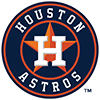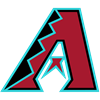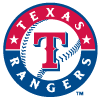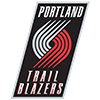2015 Rockies Team Preview: Blake Street Bummer
Though few probably expected the Rockies to challenge for a playoff spot in 2014, the organization at least seemed poised to make further strides under second-year manager Walt Weiss. After all, this was a team that had two superstars (Troy Tulowitzki and Carlos Gonzalez) returning from injury, the reigning NL batting champion (Michael Cuddyer), and a competent, if unexciting trio of starters (Jorge De La Rosa, Jhoulys Chacin, and Tyler Chatwood). Surely, the thinking was, that would be enough to keep the team competitive in the NL West.
Things couldn't have veered more off course for the Rockies.
After looking like a leading NL MVP candidate with a massive first half, Tulowitzki suffered a hip injury in July that required season-ending surgery, tacking on yet another injury setback to a career that's been full of them. The similarly star-crossed Gonzalez never looked to be comfortable from the start, as an ongoing bout with knee tendinitis limited him to a woeful .238/.292/.431 line before he too opted for season-ending surgery in August.
That was only the tipping point on the injury front for the Rockies. In addition to the absences of their two stars, supporting contributors like Michael Cuddyer (49 games played), Wilin Rosario (106), and Nolan Arenado (111) all missed significant time, while an already suspect pitching staff lost several key members to a variety of maladies. With the team forced to rely too heavily
2015 Rockies Team Preview: Blake Street Bummer
Though few probably expected the Rockies to challenge for a playoff spot in 2014, the organization at least seemed poised to make further strides under second-year manager Walt Weiss. After all, this was a team that had two superstars (Troy Tulowitzki and Carlos Gonzalez) returning from injury, the reigning NL batting champion (Michael Cuddyer), and a competent, if unexciting trio of starters (Jorge De La Rosa, Jhoulys Chacin, and Tyler Chatwood). Surely, the thinking was, that would be enough to keep the team competitive in the NL West.
Things couldn't have veered more off course for the Rockies.
After looking like a leading NL MVP candidate with a massive first half, Tulowitzki suffered a hip injury in July that required season-ending surgery, tacking on yet another injury setback to a career that's been full of them. The similarly star-crossed Gonzalez never looked to be comfortable from the start, as an ongoing bout with knee tendinitis limited him to a woeful .238/.292/.431 line before he too opted for season-ending surgery in August.
That was only the tipping point on the injury front for the Rockies. In addition to the absences of their two stars, supporting contributors like Michael Cuddyer (49 games played), Wilin Rosario (106), and Nolan Arenado (111) all missed significant time, while an already suspect pitching staff lost several key members to a variety of maladies. With the team forced to rely too heavily on a stream of underqualified minor league callups, particularly on the pitching front, the Rockies limped to a 66-96 finish -- an eight-win backslide from 2013.
The disappointing season prompted the much-maligned front office duo of Dan O'Dowd and Bill Geivett to resign in October, with senior director of player development Jeff Bridich stepping in as the club's new GM. Though the Rockies appointed Bridich from within their organization, the heat has surely been cranked up on manager Walt Weiss, who is entering the second season of a three-year contract and needs to get his team back on track.
Heading into 2015, there appears to be a clear hierarchy in the NL West. The Giants just claimed their third World Series title in the last five years. The Dodgers have deeper pockets than any team in the game, and brought aboard one of the most esteemed personnel men (Andrew Friedman) this winter to go along with their financial advantages. And the Padres just concluded one of the most active offseasons in recent memory, overhauling their entire outfield and bringing in one of the top pitchers on the free-agent market.
The difficult road to a division title or even a Wild Card berth leaves the Rockies in an unenviable state. With players like Tulowitzki and Gonzalez not far removed from their primes and others such as Arenado, Justin Morneau (who succeeded Cuddyer as the NL batting champ in 2014), Corey Dickerson, and Charlie Blackmon coming off strong seasons, there's a quality core in place to build around. But with both the rotation and bullpen still painfully short on difference-making talent, a definite cap exists on the team's potential. As a result, the Rockies find themselves in baseball purgatory -- too much talent on hand to embrace a full-on rebuild, but likely not enough to seriously contend.
Offseason Moves
Lost Michael Cuddyer (Mets) via free agency.
The Rockies were widely mocked for extending Cuddyer a $15.3 million qualifying offer in November, but made out like bandits when the outfielder declined the offer and inked a two-year, $21 million contract with the Mets a week later. By virtue of signing Cuddyer, the Mets were forced to forfeit the 15th overall pick in the 2015 First-Year Player Draft to the Rockies. On a performance basis alone, the Rockies' decision to extend the qualifying offer wasn't particularly blasphemous; after winning the NL batting title in 2013, Cuddyer was similarly productive in an injury-plagued 2014 campaign, posting a .332 average and a career-best .579 slugging mark over 205 plate appearances. However, with Carlos Gonzalez set to reclaim a starting role in 2015 and with younger, cheaper talents like Corey Dickerson and Charlie Blackmon coming off breakthrough seasons, there was little incentive to keep an outfield spot open for Cuddyer as he prepared to enter his age-36 season. The Rockies were fortunate to have the Mets take Cuddyer off their hands while netting a draft pick in the process, amounting to a nice coup for first-year GM Jeff Bridich.
Lost Brett Anderson (Dodgers) via free agency.
The Rockies took a major risk in acquiring the polished, yet injury-prone Anderson from the Athletics last winter, but the gambit looked like it would pay off by midseason, as the lefty emerged as a veritable staff ace with a 2.84 ERA and 60 percent groundball rate over four July outings. Unfortunately, it was a fractured pinkie and eventual season-ending back surgery in August that added yet another chapter to Anderson's extensive injury history, preventing him from topping the 100-inning mark for the fourth consecutive season. Despite their annual need for pitching help and the flashes of frontline potential Anderson demonstrated last season, the Rockies were unwilling to pick up his $12 million option due to his inability to stay healthy. The Dodgers signed him to an incentive-laden one-year deal in December, where he will get an opportunity to compete for a starting gig.
Signed free agent Kyle Kendrick (Phillies) to a one-year, $5.5 million contract.
After their pitching staff endured an assortment of injuries in 2014, the Rockies were compelled to sign to a Kendrick to a one-year deal in the offseason, primarily due to his mostly pristine track record on the health front. Kendrick has covered 180-plus frames in three of his last four seasons with the Phillies, but other than providing value as an innings eater, he did little to help fantasy owners in most formats. He works in the high-80s with his sinker and complements that pitch with a cutter, splitter and curveball, but none of those pitches grade out as true plus offerings. Consequently, Kendrick doesn't make many bats miss and pitches to contact quite frequently, which could cause his numbers to plunge further with the move to Coors Field. And if the rotation is able to notice some better fortune on the injury front, it's quite possible that Kendrick transitions to long relief at some point to open up a starting spot for top prospects Jon Gray and Eddie Butler.
Signed free agent Nick Hundley (Orioles) to a two-year, $6 million contract.
After being shipped from San Diego to Baltimore in late May in the wake of Matt Wieters' season-ending elbow injury, Hundley hit .233/.273/.352 over 174 plate appearances for the Orioles while splitting time with Caleb Joseph. With Wieters due back in 2015, Hundley chose to sign on with the Rockies on a two-year commitment. In his new destination, Hundley could stake a claim at the No. 1 job, as Wilin Rosario's lack of polish behind the plate has prompted the organization to explore a position change. Hundley lacks Rosario's power and posted a weak .273 on-base percentage last season, but his superior skills as a game-caller may be significant enough to make up for his offensive deficiencies. In fact, simply by calling Coors Field his home park, Hundley almost certainly stands to notice an improvement in his battling line.
Signed free agent Daniel Descalso (Cardinals) to a two-year, $3.6 million contract.
Serving as the Cardinals' utility man in 2014, Descalso saw his playing time drop for the third consecutive season. Though he saw action at all four infield positions, Descalso accrued just 184 plate appearances, slashing a meager .242/.333/.311. There is little get excited about with Descalso beyond his versatility, but with the move to the Rockies, he'll have decent odds of reversing his declining usage trends. While Descalso won't get the opportunity to compete for a starting job in spring training, the annual injury concerns with Troy Tulowitzki make it reasonable to anticipate extended action at shortstop becoming available at some point. Even if that materializes, Descalso is unlikely to become more than a streaming option in daily formats when he gets a prolonged stretch of playing time at Coors Field.
Traded Josh Rutledge to Angels for reliever Jairo Diaz.
Handed a large chunk of playing time when a torn labrum limited Troy Tulowitzki to 91 games, Rutledge was a colossal disappointment in his attempt to demonstrate that he was a viable replacement option. While he was more detrimental to the Rockies on the defensive end, Rutledge's .269 batting average, four homers and two stolen bases over 342 plate appearances weren't particularly encouraging outputs for a bat-first middle infielder. The 25-year-old still has time to make the necessary corrections with his hitting mechanics, but the Rockies seemed to run out of patience.
Diaz, meanwhile, is relatively unproven at the MLB level with only five appearances to his name, but excelled at Double-A Arkansas in the Angels organization last season, posting a 2.20 ERA with a 48:10 K:BB ratio in 32.2 innings. The 23-year-old seemed to find a strikeout pitch with his high-90s heater, and perhaps of equal importance, kept his walk rate below 3.00 BB/9. He might be a long shot to earn an Opening Day roster spot with the Rockies, but with the bullpen not looking like a notable strength for the squad, he's sure to get a look a long look in the majors at some point this season.
Lost Matt Belisle (Cardinals), Nick Masset (Marlins), and Franklin Morales (Royals) via free agency.
After tossing 317 mostly effective relief innings over the previous four seasons, Belisle's massive workload finally caught up to him in 2014. While the 34-year-old didn't notice a decline in velocity, his diminished control and inability to avoid hard contact resulted in a 4.87 ERA over 66 appearances. Belisle's downturn in performance prompted the Rockies to let him walk in the offseason, with the Cardinals wagering that a reduced innings count and a move away from altitude can generate better results.
Like Belisle, Masset and Morales saw ample work last season for the Rockies, but that was mostly by virtue of their ability to stay healthy more than their performance. Both pitchers compiled ERAs over 5.00, with Morales' numbers especially damaging, since he covered 142.1 innings while swinging between the rotation and bullpen as necessary. Unsurprising, the pitchers faced cool markets in free agency, with both settling for minor-league deals.
Traded away Juan Nicasio (Dodgers), Rob Scahill (Pirates), Chris Martin (Yankees), Jayson Aquino (Blue Jays); Lost Jackson Williams (Angels) via waivers.
Each of the players listed above were designated for assignment by the Rockies in the offseason, with the four traded players netting either low-impact prospects or cash considerations. Nicasio is the most notable player who was dumped from the 40-man roster, as the Rockies effectively gave up hope of the gifted right-hander ever putting it together as a starter. Though he was one of the few Rockies pitchers to avoid the DL last season, Nicasio was a complete mess at the back end of the rotation, yielding a 5.92 ERA and 15 home runs over 73 frames before the Rockies sent him to the minors. He found better results upon rejoining the Rockies in August as a reliever (3.48 ERA, 17:5 K:BB ratio over 20.2 innings), but it wasn't a large enough of a sample to convince the organization they had a future bullpen ace on their hands. The Dodgers are banking on a change of scenery helping Nicasio to tap into his vast potential.
Traded Chris O'Dowd and Jose Briceno to the Braves for David Hale and Gus Schlosser.
The Rockies did well to flip O'Dowd and Briceno, two low-level catching prospects with limited upside, for a pair of versatile arms who have already reached the big leagues. Both Hale and Schlosser came up through the Braves' system as starters, but will more than likely function as swingmen with their new organization. Hale is the more advanced pitcher of the two, as he stuck with the Braves for all of 2014, turning in a 3.30 ERA and 1.46 WHIP over 87.1 innings. Poor peripherals (4.5 K/9 rate, 4.0 BB/9 rate) took some luster off his strong traditional numbers, but his stuff should play reasonably well in the thin air of Coors Field given his groundball tendencies (56.7% career rate). Hale is expected to primarily serve as a long man out of the bullpen for the Rockies this season, though he'll rank among the top choices for a spot start in the event of an injury to a member of the rotation. Schlosser figures to open the season in a starting role with Triple-A Albuquerque.
Signed John Axford and Rafael Betancourt to minor-league contracts that include invitations to major-league spring training.
Axford and Betancourt have a combined 190 career saves on their resumes, but both have fallen on hard times the last few seasons for differing reasons. In the case of Axford, a propensity for giving up long balls and an escalating walk rate have explained his demise, as he's bounced between four organizations and has lost closing gigs with the Brewers and Indians in the last two years alone. There still remains some hope for him to hold down a relief job with the Rockies in 2015, as he did show an uptick in his groundball rate (53.6%) last season that will be essential to any success at Coors Field. He'll have to pair that with improved control in spring training in order to win a 25-man roster spot.
Betancourt, on the other hand, saw his career placed on life support after undergoing Tommy John surgery in August 2013. While many pitchers have returned from the procedure and found success thereafter, few have attempted such a comeback in their age-40 season, as Betancourt will do in 2015. The right-hander, who served as the Rockies' closer from 2012 until the time of his operation, was able to pick up some innings at the tail end of last season with the organization's rookie-level and Triple-A affiliates, and isn't expected to face any limitations in spring training. Betancourt will receive the opportunity to compete for a low-leverage bullpen gig with the Rockies, but will need to demonstrate the long layoff from surgery didn't diminish the quality of his arsenal.
Claimed Jorge Rondon (Cardinals) off waivers.
After finally getting a taste of MLB in 2014, the 26-year-old Rondon was designated for assignment by the Cardinals following the season and quickly scooped up by the Rockies. The hard-throwing righty has fared reasonably well the last two seasons at Triple-A, but has struggled with his command at times. It's possible with a strong spring that Rondon could break camp with the Rockies and possibly even lock down a meaningful bullpen role if his walk rate continues to trend positively.
Lost Taylor Featherston (Angels) and Danny Winkler (Braves) to the Rule 5 draft.
The 24-year-old Featherston showed decent pop while at Double-A Tulsa last season, but he didn't have much of a future with the Rockies with highly-regarded middle infield prospects Trevor Story and Forrest Wall quickly catching up to him in their development. He'll have a legitimate shot at competing for the starting second base job with the Angels.
Winkler surely would have been protected from the Rule 5 draft by the Rockies had he not tore the UCL in his throwing arm last June, requiring Tommy John surgery. The 25-year-old had been outshining stud prospects Jon Gray and Eddie Butler at Double-A Tulsa prior to the injury, submitting a 1.41 ERA, 0.71 WHIP, and 71:12 K:BB ratio over 70 innings. Winkler will likely be stashed on the Braves' disabled list for the entirety of 2015, and if he's able to regain his pre-injury form upon his return to the mound next season, he could challenge for a rotation spot with the big club.
Signed free agents Jair Jurrjens (Rockies), John Lannan (Mets), Roger Bernadina (Dodgers), Omar Quintanilla (Mets), and Matt McBride (Rockies) to minor-league contracts that include invitations to major-league spring training.
All five players saw time in the majors last season, but it would be quite surprising if any of them open the 2015 season on the 40-man roster. Instead, look for all to function as organizational filler at the Triple-A level for the Rockies or another team once spring training comes to an end, with any opportunity to join the majors only arriving when injuries begin to mount.
Projected Lineup (vs. RHP/LHP)
1. Charlie Blackmon, CF/Drew Stubbs, CF
2. Carlos Gonzalez, RF
3. Troy Tulowitzki, SS
4. Justin Morneau, 1B/Wilin Rosario, C
5. Nolan Arenado, 3B
6. Corey Dickerson, LF/Justin Morneau, 1B
7. DJ LeMahieu, 2B/Corey Dickerson, LF
8. Nick Hundley, C/DJ LeMahieu, 2B
Though manager Walt Weiss likely hasn't decided on his exact batting order against right-handed pitching, it appears safe to conclude that those first six hitters listed will fill the corresponding spots in some arrangement. The bottom third of the order remains a bit more unsettled, as it will largely hinge on the club's plans for Rosario. The power-hitting backstop's much-maligned defense has him exploring a position change heading into the spring, and prompted the Rockies' signing of glove-first catcher Hundley in the winter. Even if a platoon doesn't develop, it appears safe to conclude that with Hundley and Michael McKenry around, Rosario looks to be in line for a decreased role.
So long as he remains with the team, however, Rosario should find himself in a prominent lineup spot against lefty pitching. He was one of the team's top hitters against southpaws in 2014, submitting a .317/.346/.644 line and 156 wRC+ over 107 plate appearances. Likewise, Drew Stubbs (.328/.395/.550 over 147 plate appearances) will be a permanent fixture against lefties, swapping in with Blackmon or Dickerson on a given night. Despite their surprise breakouts last season, neither Blackmon (78 wRC+) nor Dickerson (87 wRC+) were able to find much success against lefties. As such, Stubbs figures to draw the higher spot in the order in these scenarios, with the remaining outfielder occupying a bottom-third spot.
Projected Rotation
1. Jorge De La Rosa
2. Jhoulys Chacin
3. Kyle Kendrick
4. Tyler Matzek
5. Jordan Lyles
The late-winter signing of Kendrick closed off any legitimate competition for the final spot in the rotation during spring training. That being said, it would be a major shocker if more than three pitchers from this group finished the season as members of the rotation. The impending graduations of top prospects Jon Gray and Eddie Butler from the minors seemingly make the unimpressive Kendrick the safest bet to lose his job, though the still-developing Matzek and Lyles could easily backslide after showing flashes of promise in their first seasons with the Rockies. As the club's nominal ace, De La Rosa is probably the team's top starter to monitor for fantasy purposes, but he has a limited ceiling due to his pitch-to-contact approach, which netted a 4.10 ERA, 1.23 WHIP, and 6.7 K/9 rate in 2014.
Closer:LaTroy Hawkins was only expected to serve in a ninth-inning role temporarily last season for the Rockies before giving way to one of the team's younger, harder-throwing relievers. However, he surprisingly locked down the gig from start to finish, saving 23 games and posting a 3.31 ERA and 1.19 WHIP over 54.1 innings. That the 42-year-old enjoyed that level of job security is largely an indictment of the Rockies' lack of impact bullpen arms, as Hawkins' 5.3 K/9 rate made him perhaps the league's least overpowering end-gamer. Some expected inflation from last season's 5.4 percent HR/FB mark is probably in order for Hawkins, but his ability to limit walks and generate groundballs at a steady rate suggests he might not be in for a significant ERA correction. Hawkins is set to open 2015 as the closer again, but if one of the team's younger relievers shows increased dependability, the veteran could slide into the setup gig his skill set is better suited for at this point.
Key Bullpen Members: Trailing only the Astros in bullpen ERA last season with a 4.80 mark, the Rockies were an utter mess in relief, and it wasn't just a byproduct of playing 81 games at Coors Field; the team's 3.86 xFIP, which adjusts for park effects, ranked 24th in baseball. Bearing the brunt of the blame for the bullpen's collapse were Rex Brothers, Boone Logan, and Wilton Lopez, all of whom vastly underachieved after entering the season in key setup roles. Lopez has since been jettisoned from the organization, but Brothers and Logan, along with Adam Ottavino, will be back to form the bridge to Hawkins.
Entering the spring, Ottavino may be the best positioned of the Colorado relievers to challenge Hawkins for closing duties. The right-hander was one of the few dependable bullpen arms last season, leading all Rockies relievers in WAR (1.3) and posting a 3.60 ERA and 4.38 K/BB ratio over 65 innings. A long man for the Rockies the previous two seasons, Ottavino leaned on his mid-90s fastball and sharp slider combination to solidify himself as the top setup man by September. Ottavino's superior strikeout stuff and comparable control would undoubtedly give the Rockies a higher-ceiling option at closer, but the right-hander may need to show more effectiveness against lefties -- who batted .338 against him in 2014 -- before he gets his shot. Regardless, Ottavino looks like the most malleable member of the bullpen, as a pitcher who has shown an ability to pitch effectively in short relief, high-leverage situations and multi-inning scenarios.
Brothers is simply trying to restore value after once possessing the look of a future fireman for the club. The hard-throwing lefty was the most disappointing performer in a beleaguered bullpen last season, as a sizable dip in both his strikeout rate (8.7 K/9) and control (6.2 BB/9) yielded a bloated 5.59 ERA over 56.1 innings. Finding the strike zone has always been a concern for Brothers, and his steep decline in that area last season creates plenty of doubt that he'll become the reliable power arm in relief that once seemed to be his destiny.
Like Brothers, expectations were high for Logan last season after he was inked to the most lucrative reliever contract in Rockies history, and he was a colossal bust in just about every respect. Complications from an offseason elbow procedure resulted in him landing on the DL out of spring training, and proved bothersome throughout the campaign. He was shut down for good when the inflammation resurfaced in August, with the lefty tossing just 25 innings. Logan did experience a brief spell of success in April and May after returning from his first DL stint, posting a 2.45 ERA and 17:4 K:BB ratio over his initial 13 appearances, but things would only spiral downward from there as his health deteriorated. Those fleeting triumphs give Logan a glimmer of hope for delivering some ROI over the remainder of his deal, though avoiding the injury bug has never been his strong suit.
Notes of Import, Fantasy or Otherwise:
Is this finally the year that Troy Tulowitzki gets dealt?
The trade rumors surrounding Tulowitzki the last few years have been nearly as persistent as his injuries, but it wasn't until 2014 that the franchise cornerstone showed any willingness to being moved. With the Rockies venturing toward their fourth consecutive losing season by midsummer, Tulowitzki, who had previously downplayed any discontent with the organization, acknowledged that the losing had finally taken its toll on him and suggested he'd be open to a trade to a contending club. Given that Tulowitzki was batting .350 with 20 homers at the All-Star break, the Rockies surely would have landed an impressive haul in return for the star shortstop at the deadline.
But the team didn't move Tulowitzki, and then watched as he suffered a hip injury just a few days later that would ultimately require season-ending surgery to repair a torn labrum. And while the Rockies are still listening to trade offers on Tulowitzki, it's hard to imagine the organization ever getting back the value it seeks in return. Tulowitzki has now missed 222 games over the past three seasons, a number that potential suitors will undoubtedly put more weight in than any of the lofty counting stats he's provided during that time frame. That won't stop the rumors from circulating, but the Rockies will probably need Tulowitzki to stay fully healthy and showcase his usual sublime hitting and nifty glovework through July -- along with finding themselves out of the Wild Card hunt -- in order to make any deal worthwhile.
Even if he's healthy, should elite-level production still be expected from Carlos Gonzalez?
Since his breakout 2010 season, Gonzalez has proven himself to be one of the league's top outfield talents...when he's been able to stay on the field. He's only missed slightly fewer games (171) than Tulowitzki over the last three years, and things seemed to hit a new low last season. After choosing to bypass surgery on a sprained finger last offseason, Gonzalez got off to a poor start over the first two months of 2014, batting a paltry .258/.311/.458 before developing a small tumor in his left index finger in June that resulted in a DL stint. He was even worse after returning in July, batting .188 with a 36.2 percent strikeout rate over his 69 plate appearances, with his season ultimately ending in August when knee surgery was deemed necessary.
While Gonzalez enters spring training this season seemingly fully recovered from both the knee and finger injuries, there's plenty of concern about his ability to reemerge as a top-flight player. At the very least -- given his annual susceptibility to injury -- it seems likely he'll show more restraint on the basepaths as he enters his age-29 season, a time when stolen-base totals tend to trend downward anyway. And it's always worth wondering how much of the horrid batting numbers he submitted were a byproduct of injury, and how much were a reflection of a decline in skill.
If early ADP trends are any indication, many are gambling that it's the former; Gonzalez typically has been going in the 40-to-50 range in 5x5 mixed league drafts. While such an early selection makes more sense in a go-for-broke, NFBC-style format where it might be beneficial to chase a high-ceiling player, Gonzalez may no longer be worth the risk in any other format. And that's because for seemingly the first time in a few years, health concerns alone aren't the only factor fantasy owners need to weigh when considering whether or not to spend a high pick on Gonzalez.
How sustainable are last season's breakout performances from Charlie Blackmon and Corey Dickerson?
Though there were plenty of lowlights in a 96-loss season, the Rockies can count the performances of Blackmon and Dickerson as two of the more pleasant surprises. Blackmon captured most of the attention early on, as he quickly emerged from the spring training scrum to win the starting center field job and leadoff gig. He solidified his standing in those roles with a six-hit outing in the season's first week, and went on to finish April with an incredible .389 batting average, five homers, seven steals and 23 runs scored over 28 games.
It was Dickerson, though, that seemed to finish with more momentum of the two. After opening the season in the minors, Dickerson took advantage of long-term injuries to Michael Cuddyer and Carlos Gonzalez to become a lineup mainstay, falling just short of qualifying for the batting title. He would ultimately finish with a team-leading 24 homers while batting .312, which should be enough to lock him -- like Blackmon -- into an everyday role heading into 2015.
Despite the ascendance of the two players, there's reasons to temper the enthusiasm for both. Once Blackmon's BABIP and HR/FB rate began to normalize after the season's first month, he looked less like an All-Star player. He slashed a meager .271/.318/.405 from May onward, which probably represents a reasonable approximation for Blackmon's 2015 line. While that will still drum up plenty of interest in fantasy circles -- especially since it should come with strong stolen-base totals and moderate power -- paying for Blackmon's April-fueled numbers from last season could prove costly.
Dickerson might be an even more dangerous investment, as his ADP currently sits in the 20-to-27 range in 5x5 mixed-league drafts. That's a hefty markup to pay for a player with only one season under his belt as an upper-tier fantasy outfielder, and one with a profile that contains some troubling splits. Dickerson saw a 363-point drop in OPS on the road last season and was mediocre against lefty pitching, posting a .308 OBP while striking out in more than a quarter of his 98 plate appearances. The latter deficiency puts him at risk of slipping back into a platoon role with Drew Stubbs, who handles lefties quite well. Those flaws make him far from a trustworthy option as a second- or third-round pick in fantasy drafts.
Strengths:
Even after losing Michael Cuddyer to the Mets this offseason, the Rockies' organizational outfield depth remains as robust as ever. In addition to possessing three capable outfielders in its starting lineup (Carlos Gonzalez, Charlie Blackmon, and Corey Dickerson), the Rockies have a versatile substitute in Drew Stubbs, who will bring plenty of speed and pop to the top of the order as part of a platoon with either Dickerson or Blackmon. Brandon Barnes was the club's best pinch-hitter last season, and should receive plenty of duty as a late-inning replacement.
Digging deeper, the farm system is also ripe with outfield talent that could arrive in the majors by 2016. Topping the list is David Dahl, a former first-round draft choice who offers an intriguing concoction of tools. Raimel Tapia and Rosell Herrera give the organization two additional promising outfielders that could be members of the next great Rockies team.
Weaknesses:
For a team that calls Coors Field home, it shouldn't come as a surprise that the Rockies posted the game's most significant home/road hitting splits last season. But it was just how ugly their performance away from Coors was in 2014 that is more stunning, as the team's collective .288 wOBA on the road ranked ahead of only the Padres. Even players like Troy Tulowitzki weren't immune to those struggles; he batted just .257 and noticed a 400-plus point drop in OPS on the road. With division rivals in the Giants, Dodgers, and Padres all dwelling in pitcher-friendly venues, the Rockies are in desperate need of raising their road production in order to have a shot at staying competitive.
And as always, a dearth of high-impact pitchers in the rotation and bullpen looks to be a stumbling block for the Rockies. Jorge De La Rosa has shown an ability to thrive at Coors Field during his tenure with the Rockies, but he hardly fits the profile of a staff ace. Likewise is true for pitch-to-contact closer LaTroy Hawkins, who already announced he would retire after the season. Perhaps Jon Gray, Eddie Butler, and maybe even Tyler Matzek could give the Rockies the premium arm they've lacked since the prime years of Ubaldo Jimenez, but they seem unlikely to reach their peaks for at least another season or two.
Rising:Nolan Arenado: A broken finger and bout with pneumonia may have limited Arenado to 111 games in 2014, but it didn't prevent him from surpassing the production from his rookie season in nearly every meaningful category. In addition to the defensive wizardry that earned him his second Gold Glove, Arenado noticed a 122-point rise in OPS while also upping his walk rate and trimming his strikeout rate. As is typical for most Rockies batters, Arenado did the bulk of his damage at Coors Field, where he slashed .303/.344/.584 and swatted 16 of his 18 home runs. Those skewed splits figure to persist throughout his career, but given his pedigree as a former top hitting prospect, Arenado should see continued improvement in both his plate discipline and road performance as he enters his age-24 season. Those expected developments -- along with some better luck on the health front -- would surely lead to another jump in his counting stats, and potentially vault Arenado into the top tier of fantasy third basemen in 2015.
Declining:Wilin Rosario: With the Rockies pursuing an established MLB catcher in each of the last two offseasons, it's clear the organization has held a desire to move Rosario from behind the plate for a while. After striking out with Carlos Ruiz (who re-signed with the Phillies in the 2013 offseason), the Rockies appear to have found their glove-first catcher this winter in Nick Hundley, whose addition should cost Rosario playing time. Rosario has begun working out at first base and the corner outfield in an effort to increase his versatility and earn at-bats elsewhere, but the presence of established players at all three of those spots creates a natural road block. The simplest solution for the Rockies might be to trade Rosario, who would carry his most utility as a designated hitter for an American League squad in need of power. Until a trade comes to fruition, though, it's hard to see Rosario flirting with 400 plate appearances this season, much less reemerging as the 30-homer threat the Rockies once envisioned.
Sleeper:Nick Hundley: If Rosario's role declines as anticipated, naturally, there will be an opening for more at-bats at catcher. Enter Hundley, whose defensive reputation precedes his abilities with the bat, which is probably just fine with the Rockies. Neither Rosario nor Michael McKenry grade out as strong defensive backstops, which should enable Hundley -- the highest-paid of the three catchers and the only one added to the roster by incoming GM Jeff Bridich -- to pick up plenty of plate appearances. While it's true Hundley boasts a below-average offensive profile, slashing just .243/.273/.358 last season while striking out a career-worst 27 percent of the time, the Coors Effect should raise his performance, just as it has for many mediocre hitters before him. In deeper two-catcher leagues (or in daily formats), Hundley could deliver some nice value during heavier home slates against right-handed pitching.
Supersleeper:Tyler Matzek: Consistent issues with command at every stop in the minors once looked like it might force Matzek, the No. 9 overall draft pick by the Rockies in 2009, to move to relief in order to reach the big leagues. The organization gave him one last gasp at working as a starter at Triple-A, and after he showed mild improvement with finding the strike zone over 12 outings with Colorado Springs, he made his MLB debut in June. Thereafter, Matzek shocked everybody by registering a 4.05 ERA (3.78 FIP) over 117.2 innings, highlighted by a complete-game shutout of the Padres in September. He finished with a 3.4 BB/9 rate, the lowest mark of his professional career at any level, and yielded grounders on nearly half his balls in play. It's too early to proclaim that Matzek has resolved his command woes, but the lefty's sensational final month (1.69 ERA, 27:9 K:BB in 26.2 frames) has him trending in the right direction. In fact, if he can maintain September's strikeout-per-inning output, Matzek might offer more fantasy potential than any of the Rockies' other starters.
Top Prospects:
David Dahl, OF: Dahl seemed to get his development back on track last season after a hamstring injury limited him to just 10 games in 2013. He batted .309 with 10 homers and 18 stolen bases in 422 plate appearances at Low-A Asheville before earning a promotion to the California League in July. He wasn't quite able to keep pace with those numbers at High-A Modesto, noticing a drop in his walk rate and an increased strikeout rate, but Dahl's unique blend of speed, contact-hitting skills, defensive ranginess and improving power make him a prized commodity within the organization. And unlike many youthful lefty hitters, Dahl hasn't shown any weakness against same-handed pitching, an attribute that when combined with his other tools, should put him on the trajectory for landing a regular role with the Rockies once he hits the big leagues. That likely won't come until at least 2016, as Dahl will have to first master Modesto and the upper levels of the minors before the Rockies break him into their deep mix of outfielders.
Jon Gray, RHP: Though their battered rotation presented several openings by midseason, the Rockies resisted the temptation to call up Gray and begin his service clock in the midst of a non-contending year. Gray likely would have forced the Rockies' hand if he dominated in his first full season in the minors, but he was merely only very good at Double-A Tulsa, submitting a 3.91 ERA and 14.2 K%-BB% over 124.1 innings. It won't preclude him from competing for an Opening Day starting gig with the Rockies this spring, but the organization probably prefers to give him a little more time in the minors to raise his performance before joining the big club later in the season and assuming his destiny as an anchor in their rotation. Having Coors Field as his eventual home park dampens Gray's appeal more than most prospects of his caliber because of the expected ERA and WHIP hits, but the right-hander probably has a rosier fantasy outlook than the Rockies' other highly-touted hurler, Eddie Butler, on the basis of his stronger strikeout rates.
Raimel Tapia, OF: The Rockies aren't short on intriguing outfield talent at any level of their system, but Tapia's stock may have risen more than any of the organization's prospects last season. After getting off to an inauspicious start with a .244 batting mark after April, Tapia set Low-A Asheville ablaze from thereon, finishing with a .326 average while swiping 33 bases. Despite his non-traditional batting mechanics, Tapia has drawn raves for his contact skills and management of the strike zone, while his speed tool and ability to play all three outfield spots are other attributes that will aid his climb to through the minors. The jury is still out on whether or not Tapia can hit for enough power to become an everyday corner outfielder, but at 6-foot-2 and a slight 160 pounds, there's still plenty of room for him to add some bulk. The 21-year-old will spend most of the upcoming season at High-A Modesto, with an eye on arriving in the big leagues by late 2015 or 2016.
Ryan McMahon, 3B: McMahon was the toast of the Sally League last April, homering nine times in the month and looking every bit the part of the advanced left-handed hitter with pop the Rockies believed they netted when they drafted him in 2013. His slugging tailed off to more modest levels after that, but McMahon still enjoyed a successful campaign, finishing with a .282/.358/.502 line over his 552 plate appearances. While he still struggles with making contact (25.9 K%) and noticed a fairly significant discrepancy in both his home/road and lefty/righty splits, McMahon was a year or more younger than most of his compatriots at Low-A and made up for the high strikeout totals by posting a quality 9.8 percent walk rate. Nolan Arenado looks to be the Rockies' long-term answer at third base, but McMahon will likely remain at the position again at High-A Modesto this season before perhaps moving to a corner outfield spot if and when his well-rounded offensive skills warrant a promotion to the upper levels of the minors.
Eddie Butler, RHP: Butler received his first call to the big leagues last June, with optimism abounding that he and, eventually, fellow top prospect Jon Gray, would immediately lock down spots in the Colorado rotation for seasons to come. Unfortunately, Butler barely had the chance to showcase his stuff. He fell victim to shoulder soreness following his debut and didn't pitch for the Rockies again until September, making it difficult to glean much from his uneven three-start sample. That being said, the long-term outlook remains bright for the 24-year-old, whose plus fastball and quality secondary offerings have allowed him to thrive in offense-heavy environments during his minor league career. The Rockies' need for premium starters gives Butler an inside track on an Opening Day rotation spot, but the concerns with pitchers who call Coors Field home still apply. In fact, even if Butler does become the frontline starter the Rockies are banking on, his real-life value would more than likely outstrip his fantasy utility. The righty mostly gets by on inducing weak contact rather than making batters whiff, as his pedestrian 5.2 K/9 rate with Double-A Tulsa last season would illustrate. It remains to be seen if he will change his approach to miss bats as frequently as he did at lower levels of the minor leagues.
Kyle Freeland, LHP: Following a dazzling junior year at the University of Evansville, Freeland was selected eighth overall by the Rockies in the 2014 first-year player draft. The Rockies made quick work in signing the left-hander, who debuted with their rookie club in July before finishing the season with five starts at Low-A Asheville, where he gave up just two runs and struck out 18 batters over 21.2 innings. The Rockies intentionally capped his pitch counts due to the high number of innings he had thrown for Evansville in the spring, but he'll be on tap for a full workload in 2015, perhaps opening the season a level up in the California League. The 21-year-old doesn't have overpowering stuff, but does an excellent job of painting the strike zone with his low-90s fastball, low-80s slider and an improving changeup. His early success has been encouraging and could allow him to rise through the Rockies' system quickly, but he'll first need to prove himself against the competition in the upper minors before receiving a big-league shot.
Tyler Anderson, LHP: Though he possesses a first-round pedigree, Anderson hasn't received much buzz in prospect circles due to a lack of premium velocity along with his relatively slow climb through the Rockies' system for a three-year college pitcher. Despite those shortcomings, Anderson has managed to thrive at every level he's pitched, and nowhere more so than at Double-A Tulsa in 2014. The left-hander submitted a 1.98 ERA and saw his strikeout rate jump up to 22.4 percent across 118.1 innings, earning Texas League Pitcher of the Year honors in the process. Anderson, who turned 25 in December, was added to the Rockies' 40-man roster after last season and will probably compete for a rotation spot with the big club in spring training. He likely profiles as little more than a mid-rotation or back-end starter over the long haul, but a quality changeup and an improving breaking ball -- aided by a deceptive delivery -- could allow Anderson to experience a dose of success in the majors at some point in 2015.

























